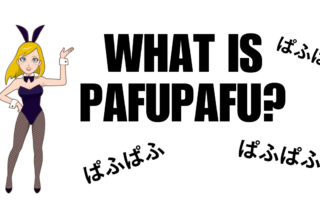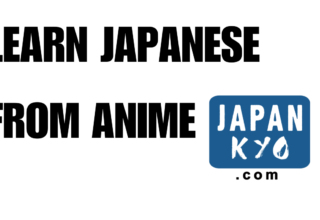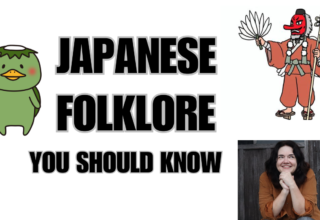
On this episode of Ichimon Japan we ask: What is yakitori?
Topics Discussed
- What yakitori is
- The difference between yakitori when it is written using kanji and when it is written using only hiragana
- What qualifies as yakitori
- An overview of the history of yakitori
- The supposed origin story of the skewered sparrows that the area around Fushimi Inari Shrine in Kyoto is known for
- How eating meat was considered taboo throughout much of Japan’s history
- Yakitori during the Meiji Period
- Yakitori shops
- The pros and cons of using charcoal as opposed to propane when grilling yakitori
- The specialized names used to refer to chicken parts
- The supposed origin of the term negima
- What part of a chicken the term bonjiri refers to and the etymology of the term
- The many meanings/usages of the term kimo
- What sunazuri is
- What part of the chicken is referred to as a mame (bean) at a yakitori shop
- What part of a chicken a chōchin/kinkan is
- The interesting history behind Higashi Matsuyama City’ (Saitama Prefecture) pork “yakitori”
- A yakitori vending machine in Ishinomaki City in Miyagi Prefecture
- And much more!
Listen to Ichimon Japan on
Apple Podcasts Google Podcasts Stitcher Spotify iHeartRadio PodBean Tunein RSS
Support on Patreon
If you enjoy Ichimon Japan and want to ensure that we’re able to produce more episodes, then please consider becoming a patron on Patreon.com. You can join for just $1 a month and that comes with perks like early access to episodes, a shout-out at the beginning of a future episode, bonus content, and discounts to Kimito Designs. For $3 a month you get all that plus access to Japanese Plus Alpha, a podcast produced by me (Tony Vega) that focuses on the Japanese language and its many quirks. Whether you are studying Japanese or just enjoy learning about language and linguistics, you’ll enjoy Japanese Plus Alpha.
And it goes without saying that if you sign up, you’ll also get my undying gratitude. Thanks in advance!
Sources, Links, Videos, Etc.
Here are some of the main Japanese-language sources used when preparing for this episode.
- 焼き鳥の定義
- 焼き鳥の歴史
- 焼き鳥の豆知識について
- 焼き鳥の「ぼんじり」とは?どこの部位?栄養素?気になるカロリーを解説
- 焼き鳥用語集
- 焼き鳥の部位いろいろ
- やきとりって何だ? – やきとりの定義を辞書から探る
- 焼き鳥の定番ねぎまの「ま」の意味は?歴史や由来を紐解く
- 焼き鳥やさんの「ぼんじり」(「ぼんちり」「ぼんち」)という名前の由来
- 游氣風信 No.158 2003. 2. 1 肝のはなし
- ハツ
- コロナ禍で誕生した「焼き鳥無人販売機」が人気 宮城・石巻市
- This is the news article about the yakitori vending machine in Ishinomaki City, Miyagi Prefecture. The article contains photos of the vending machine.
Here is the video of the yakitori vending machine in Ishinomaki City, Miyagi Prefecture.
Here is the list of chicken parts we covered in this episode.
Yakitori Terminology List
- Momo (モモ、もも): Thigh meat
- Sasami (ささみ): Meat from the inner breast, chicken tenderloin
- Negima (ねぎま、葱鮪), Hasami (はさみ): In the context of yakitori this refers to a skewer of chicken and green onions
- Note: This was not made clear in the episode but according to the sources we found the term negima came from the name of a stew made of green onions and tuna. This dish was called negimanabe (葱鮪鍋). As explained in the episode, eventually people started using chicken became more affordable than tuna and so the term negima came to be associated with chicken rather than tuna.
- Mune (むね): Chicken breast
- Bonjiri (ぼんじり): The meat at tail of the chicken
- Kimo (肝、きも), Rebā (レバー): Liver
- Zuri (ずり), Sunazuri (砂ずり), Sunagimo (砂肝): Gizzard
- Nankotsu (なんこつ、軟骨): Cartilage
- Yagen nankotsu (ヤゲン軟骨): Cartilage (connects to the breast bone)
- Hatsu (八ツ), Shinzō (心臓), Kokoro (こころ): Heart
- Mame (まめ), Mamegimo (まめぎも): Chicken pancreas
- Seseri (せせり), Soroban (そろばん), Nekku (ネック): Chicken neck meat
- Kinkan (キンカン): Chicken ovary
- Chōuchin (チョウチン): Chicken ovary with egg yolk
- Note: Although in the episode we give the impression that kinkan and chōchin are the same, it seems that they are actually two different types of yakitori. However, there is a chance that some places may not distinguish so strictly between the two.
The latest episode of the Japan Station podcast, can be found below.
For even more information on the history of chickens and the chicken industry in Japan, check out the Japan Station episode below.
If you would like to check out the Kimito Designs shop, then use the link below. Remember to use the coupon code OPENING10 when you check out to get 10% off (valid until the end of 2020).
Japanese Vocabulary List
Most episodes feature at least one or two interesting Japanese words or phrases. Here’s some of the ones that came up on this episode. All information is from Jim Breen’s WWWJDIC.
- Tare
- たれ (n) (1) sauce (esp. soy or mirin-based dipping sauce)
- Butabara
- 豚バラ : 豚バラ; 豚ばら; 豚肋 【ぶたバラ(豚バラ); ぶたばら(豚ばら,豚肋)】 (n) (See バラ肉) boneless pork rib; boned pork rib
- Suzume
- スズメ : 雀 【すずめ(P); スズメ】 (n) (1) tree sparrow (Passer montanus)
- Sasa
- 笹 : 笹(P); 篠; 小竹 【ささ】 (n) bamboo grass; generally smaller species of running bamboo that do not shed their sheaths (e.g. Sasa spp.)
- Take
- 竹 【たけ(P); タケ】 (n) (1) bamboo (any grass of subfamily Bambusoideae)
- Negi
- ネギ : 葱 【ねぎ(P); き(ok); ネギ】 (n) (uk) Welsh onion (Allium fistulosum); green onion; spring onion
- Maguro
- マグロ : 鮪 【まぐろ(P); しび; マグロ】 (n) (1) (uk) tuna (edible fish, Thunnus spp.); tunny; (n) (2) (uk) Pacific bluefin tuna (edible fish, Thunnus orientalis); (n)
- Toro
- トロ : とろ(P); トロ (n) fatty cut (esp. of tuna belly)
- Hasami
- ハサミ : 鋏(P); 剪刀 【はさみ(P); ハサミ】 (n) (1) (uk) (See 螯) scissors; shears; clippers
- Bonbori
- ぼんぼり (n) paper-covered lamp or lantern
- Shiri
- 尻 : 尻(P); 臀; 後 【しり】 (n) (1) buttocks; behind; rump; bottom; hips
- Kimo
- 肝 : 肝(P); 胆(P) 【きも(P); たん(胆)】 (n) (1) liver; innards; (n) (2) courage; spirit; pluck; guts; (n) (3) (きも only) crux; essential point
- Kimodameshi
- 肝試し : 肝試し; 肝だめし; 胆試し 【きもだめし】 (n) test of courage (e.g. at a frightening place such as a graveyard); dare
- Kushi
- 串 【くし】 (n) (1) spit; skewer
- Eko
- エコ (adj-na,pref) (abbr) (See エコロジカル) ecological; eco-
We Want Your Questions
Is there something about Japan that confuses you? Is there something about Japanese culture that you would like to learn more about? Is there something in Japanese history that you would like us to explain? We’re always looking for new questions about Japan to answer, so if you have one, please send it to ichimon@japankyo.com.
Special Thanks
Opening/Closing Theme: Produced by Apol (YouTube, Twitter, Facebook, Fiverr)
Ichimon Japan cover art: Produced by Erik R.
Follow Japankyo on Social Media
Full Show Notes
What are you funniest Japanese mistakes? | Ichimon Japan 30










